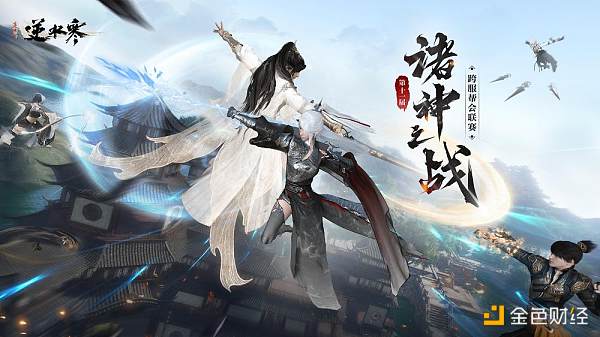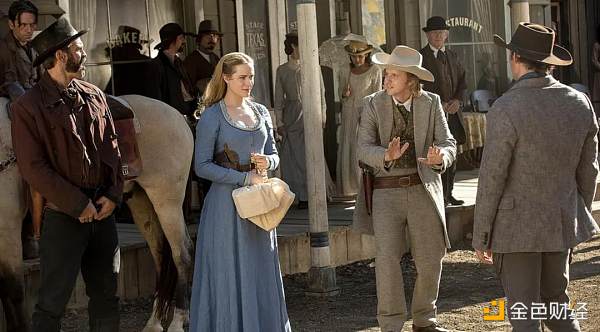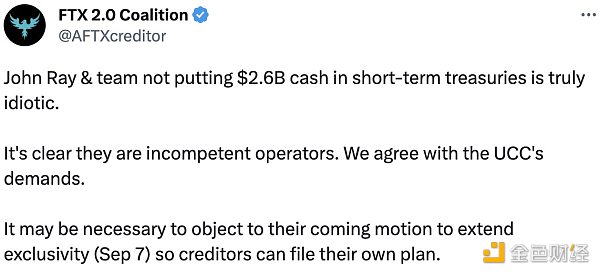What new opportunities has AI brought to the gaming industry in 2023?
AI's impact on gaming industry in 2023In 2023, there was a big boom in AI games.
With the help of AI, “Egg Party” had its shining moment at the beginning of this year – with a daily active user count of over 30 million, it became the game with the highest daily activity on NetEase Games. In August, “Egg Party” surpassed 100 million monthly active users. “Nishui Han” which was launched in June this year, achieved a revenue of over 2 billion yuan in its first month with interactive and “emotional” NPCs.
On the content production side, the development of AI is also unstoppable. On one hand, according to the “Insight into High-end Talent in the 2023 Gaming Industry” released by Maimai Gao Pin, nearly 95% of game practitioners are actively embracing AI, and over 1/5 of them have regarded AI tools as their work partners. On the other hand, players are using AI tools to participate more in the content production process, realizing an infinite loop of content supply and consumption.
In the era of AI games, we invited Funmangic CEO Bai Zhi, CTO Wu Feng, head of a leading esports and endgame brand, and Fan Mingwang, early-stage project manager of Fengrui Capital, to discuss how AI has affected the gaming industry.
- Co-founder of Three Arrows Capital, Su Zhu, has been arrested and may face 4 months of imprisonment, while co-founder Kyle Davies is still missing.
- LianGuai Morning News | Hong Kong Securities and Futures Commission Releases Multiple Lists of Virtual Asset Trading Platforms
- LianGuaintera Cryptocurrency Compensation Report 88% of practitioners work remotely, with executive salaries exceeding $5 million.
Bai Zhi, founder of Funmangic, was previously the head of metaverse incubation at ByteDance and also served as the chief planner for “Love and Producer”. Funmangic, led by her, is developing an AI-driven social product for gaming content.
Wu Feng, CTO of Funmangic, was previously in charge of the Wind and Thunder Studio at NetEase and the AI platform product at NetEase Fuxi. NetEase Fuxi has served a series of major IPs, such as “Qian Nv You Hun” and “Nishui Han”, which have made a lot of explorations in the field of AI.
Teacher Yang, head of a leading esports and endgame brand, is a senior practitioner in the gaming industry.
Fan Mingwang, early-stage project manager of Fengrui Capital, focuses on consumption, TMT, and entertainment.
The topics they discussed include but are not limited to:
-
Why is it said that “AI and games have been combining for a long time”?
-
With over 100 million monthly active users, what did “Egg Party” do right?
-
Is the introduction of AI technology giving game practitioners a “buff” or a “bug”?
-
The memory of large models is already amazing, why is it still a challenge to give AI long-term memory like individuals?
-
Why is it said that “AIGC can become a perpetual motion machine for content” in the science fiction dimension?
-
When productivity supply, distribution methods, and content dimensions all undergo changes under the influence of AI, what new opportunities will they bring to the gaming industry?
We have edited some of their discussions into an article, hoping to provide new perspectives for consideration. We welcome your continuous observation and exploration with us.
01 Tracing Back, AI and Games Have Long Been Combined
Fan Mingwang: What stage has AI technology reached in the gaming industry? What is its current status and development?
Wu Feng: In fact, the combination of artificial intelligence and games did not start this year, but it has received special attention this year because generative artificial intelligence has developed very rapidly. We can say that the world has changed while taking a nap.
For example, NetEase Fuxi was established in 2017, making it the first attempt in China to combine artificial intelligence and games. The mobile game “Nishuihan” has shown its achievements. However, these achievements cannot be separated from NetEase’s root and effort in the MMO (Massive Multiplayer Online Role-Playing Game) field over the past five years. Therefore, NetEase was able to quickly integrate artificial intelligence and games on the application side when AI was hot.

Game “Nishuihan”. Image source: NetEase
There were computer-driven NPCs (Non-player character) in games a long time ago, and we called these NPC behavior engines AI. However, they were deterministic and pre-programmed. When we play “Super Mario,” all non-player controlled units are called NPCs. For example, the little turtle in the game will move back and forth in place, and it has its own behavior pattern.

Game “Super Mario”. Image source: 360 Game Entertainment
This is the first stage of AI application in games. It is based on pre-programmed logical units using behavior trees or state machines, and we also call it AI.
The second stage is the “deep learning” stage. For example, in the game “Endless Journey,” which has a highly dynamic and fully 3D game environment, how can we make NPC robots perform as well as humans? We used reinforcement learning methods to drive highly competitive and human-like competitive robots. In simple terms, it is to make the NPCs in the game more agile and strategic in combat mechanisms and gameplay, just like humans.
For example, in games like “King of Glory” and “League of Legends,” the AI-controlled heroes are as agile and strategic as the ones we control. Or take AlphaGo as an example, it is actually a typical representative of adversarial learning in deep learning, using reinforcement learning to have the same competitive ability as humans on the Go board.

Game “King of Glory”. Image source: King of Glory Official Website
The third stage is to make the NPCs’ speech and behavior more human-like. Language is the most difficult part of artificial intelligence. After generative artificial intelligence appeared, we began to have the ability to create NPCs in games with personality, purpose, and their own behavior patterns, making them more human-like and personalized.
“Nishuihan” is a typical representative of this gameplay. NPCs have their own goals, emotions, and personalities. They can interact with players freely and even develop romantic relationships or conflicts with them. Each player’s experience with NPCs is unique and cannot be predetermined or coded.
In summary, the application of AI in NPCs can be divided into three stages. The first stage is traditional behavior trees or state machines, which are partially coded artificial intelligence. The second stage introduces deep learning and reinforcement learning, focusing on adversarial and decision-making robots. The third stage is the emergence of generative large language models, such as the intelligent NPCs in “Nishuihan,” which have personalized characteristics.
We may be in the midst of a “storm,” and more star-level games will emerge in the market. Our production relationships will also undergo more significant changes and impacts. However, we are optimistic and believe that there are many new opportunities in this field.
Teacher Yang: I would like to add that in the three steps mentioned earlier, in addition to creating adversarial robots, AI also uses big data to help us understand the game better. For example, Dota 2 has a membership system that uses big data to recommend skills, talents, and items for players during the game, which is very helpful.
Fan Mingwang: I have a question for Teacher Wu Feng. Some players feel disappointed when they find out that an NPC they have developed a relationship with does not remember their previous conversations when they log in again. I’m not sure if future technology can help AI better remember interactions with people. Are there any recent research achievements or technological pathways in this area?
Wu Feng: This is definitely possible. Long-term memory, more nuanced emotional analysis, and security are the hard strengths that AI applications compete for. This is also what Funmangic wants to achieve, a game experience that combines NPCs with emotions, feelings, and souls in a social and AI-driven environment. However, the trade-offs behind this lie in whether we have enough key phrases for debugging, enough computing power, and models that are good enough and large enough to truly achieve engineering implementation.
Of course, personally, I am more ambitious and believe that general artificial intelligence will come faster, and AI has the opportunity to bring NPCs and social interactions with souls and personalities into the gaming experience.
Although it is still a “brain in a vat” (a classic thought experiment to explore whether a brain experiencing the world is actually living in a virtual reality created by a computer), it will not be like “Westworld,” where one can physically participate in the gameplay of the town after getting off the train.

“Westworld” stills. Image source: Douban Movies
But now artificial intelligence has already surpassed the Turing test, and it may be difficult for you to distinguish whether you are communicating with a human or an AI. In the long run, AI may have long-term memory and delicate emotions, becoming an entity with personality and spirituality. These are the areas we practitioners want to improve.
Baizhi: General-purpose AI like GPT is more tool-oriented and it is difficult to establish deep emotional connections with users. We hope to use gamification to create AI social interactions, creating AI virtual characters with souls to accompany users. It does have practicality, but it can also provide emotional resonance. It allows socially anxious and introverted individuals to use AI-created NPCs to engage in social interactions.
Currently, most products in the market are focused on text-based interactions. When we have 3D virtual avatars, we also hope that NPCs can have consistent speech and behavior patterns. Behind the behavior patterns and dialogue systems is a unified LLM (Large Language Model). In this way, during the interaction between NPCs and players, they can continue to learn and train, having a more consistent logic. As a result, they may become AI entities with souls in the virtual world.
We have discussed the concept of long-term memory internally many times. We believe that long-term memory is actually a necessary prerequisite for a digital life. It should be able to unfold memories of more than seven days based on the user’s intimacy. We hope that when users come back to this virtual world or product, NPCs still have memories from a year ago, five years ago, or even ten years ago. They can remember those special moments that are truly relevant to the player, and may even have some connection to the player’s real life.
Wufeng: Earlier, I mentioned that artificial intelligence is a “brain in a vat,” but that’s not the case in games. In the traditional sense, a large language model is a cognitive model with a lot of knowledge and common sense. It is a probabilistic predictive model, but it does not have the concept of right or wrong. It does not know the correct and incorrect aspects of the physical world, nor does it have physical rules.
However, in the game world, if we introduce decision models and decision factors into the training of cognitive models, we can complement cognition and decision-making, allowing them to mutually train in a fully digitized world. That’s why I believe that general artificial intelligence and games must be combined, implemented, and developed first because they can combine decision-making ability and cognitive ability together. This is something that traditional single language models cannot achieve.
Teacher Yang: Shouldn’t AI have better memory than us normal people? Why are we concerned about the issue of AI’s long-term memory?
Wufeng: Actually, it has different meanings. The current large language models have very good memory. They have almost all of our human civilization knowledge stored within them. This is a level of memory that is irrelevant to individuals.
However, in the vast amount of memory, the things that happened between the two people that Bai Zhi just mentioned would be overwhelmed by a massive amount of human historical knowledge if they were trained in the basic model. It is not a problem that can be solved from the perspective of the basic model, but rather needs to be addressed from the perspective of middleware and upper-layer applications.
Sheep Teacher: Is it because it itself doesn’t have emotions, so when it tries to find the correct answer, it gets confused by the vast amount of information it has stored?
Wu Feng: Yes, if you want this information to be remembered in the language model, you need to train it with a large amount of data, but individual data and overall data are not of the same magnitude.
02 How Does the “AI Textile Machine” Trigger an “Industrial Revolution” in the Gaming Industry?
Fan Mingwang: This year, we have also seen games like “The Legend of Sword and Fairy” and “Nishuihan” introducing a series of new gameplay centered around AI. In addition, “Egg Party” uses AIGC technology to lower the threshold for user creation.
In the gaming industry, there is a growing trend of UGC content gameplay surpassing the duration of the game’s built-in main gameplay. What do you think about the impact and influence of AI technology on the productivity supply of the gaming industry?
Bai Zhi: “Egg Party” is a casual and light role-playing social game, and it is also NetEase’s highest DAU product in history, with a monthly active user base of over 100 million. Its UGC content ecosystem has a deep integration with AI, forming a user-generated content ecosystem.

Game “Egg Party”. Image source: Egg Party Official Website
This game has a prominent feature, which is a low threshold. Whether users can play games or not, they can participate in “Egg Party”. The game provides tools for UGC creation, allowing players who are good at the game to create their own maps, and players who are not good at the game can experience maps created by other players.

Player-created maps. Image source: Egg Party Official Website
In the process of iterating the UGC map editing function, “Egg Party” has also added AI-assisted map creation. The number of creators itself is in the tens of millions, and the number of UGC maps updated weekly reaches millions. In the future, more and more creators may be willing to use AI to assist in creation.
Sheep Teacher: There may be another significance. Without AI, UGC will always be UGC, and PGC will always be PGC. With AI, the threshold for UGC is lowered. With the addition of AI, PGC can stop producing content and only provide “possibilities”. More authors can easily create UGC content using the content provided by developers with the help of AI.
The current UGC content is centralized, with some people creating and more people just playing. With the addition of AI, the threshold for creation is lowered and users can meet their own needs for games instead of waiting for capable authors to create content they like.
Fan Mingwang: For game practitioners, especially concept artists (concept art is a hand-drawn description of character key designs and movements in the animation and video game production process, used for post-production processing), how do they view the trend of AI tools and the increasing integration of AIGC mechanisms into games?
Wu Feng: This is a particularly interesting topic. Looking deeper, this is a change in the relations of production, as players transition from purely consumers to creators. Indeed, creators in the game industry will be impacted.
This change in relations of production is very similar to the first industrial revolution, when the spinning jenny replaced textile workers. Although the spinning jenny represented advanced productive forces, at that time, thousands of unemployed textile workers angrily destroyed and burned the machines.
Artists cannot burn AI, but this impact is indeed happening. When AI painting participated in competitions for the first time, there was considerable backlash from the artist community. Recently, during the release of the movie “Obahaihe”, Hollywood screenwriters and actors went on strike, protested, and boycotted AI creation.
For practitioners, this change is definitely a double-edged sword. Is it a tool or is it replacing humans? Remember the spinning jenny, which replaced manual laborers, but no one expected that the first wave of people replaced by AI would be mental laborers. However, this does not mean complete replacement, but rather everyone adapting to it. For example, artists also need to learn AI creation and learn model training.
Fan Mingwang: In the future work process of art and creative creation, will existing positions undergo iteration and evolution with the development of AIGC technology?
Teacher Yang: Now we may think that AI will compete with people who write and draw, but in the future, new occupations will definitely emerge. There may be positions like AI trainers, and this position may also require professional specialization.
Recently, when I went back to school, I found that many students majoring in environmental materials, after completing their graduate and doctoral studies, started to become “coders”. In the future, students studying art may become AI trainers, but it doesn’t mean that they won’t be able to draw anymore after becoming AI workers. I am more optimistic about this issue. In order to have a better life, people may choose to resist at first, then accept it, and then change themselves.
Fan Mingwang: In other words, AI, as a factor of complete change in the supply and relations of productive forces, may eventually become infrastructure and be integrated into the development of various industries.
Baizhi: The transformation of productivity and production tools can bring overall progress to humanity. Humans are good at using tools, from making fire with wood to using smartphones, and now even using GPT to complete some basic tasks. AI is a new tool, as long as we use it well, we will have a more comfortable work and living environment.
Fan Mingwang: Will the application of AI technology have any impact on your team or game company itself? For example, will it change the form of your company or the organizational culture, or will it change the production efficiency?
Baizhi: From the perspective of game development, at the beginning of this year, many of our concept artists were able to quickly generate some concept designs with just a few lines. Copywriters also started using keywords to generate their own worldviews, which is an aspect of art.
As for 3D art and automatic programming, we have been experimenting from February to September, but there is still a certain gap between what we can present to players and industrialization.
Wufeng: From a technical perspective, I am participating in this with great enthusiasm. I just mentioned so many tools, including auxiliary creation, which used to be about reducing costs and increasing efficiency. After AI came, it went from the essence of cost reduction and efficiency improvement to the opportunity to connect with UGC and user creation, becoming a bridge.
The second point, I just mentioned the Jenny spinning machine, which didn’t start out well-formed either. It went through stages from manpower to hydropower to steam and electricity. We now feel that this “AI spinning machine” is not good enough, and we will also find various ways to make it better, improve the development process and production relationships, and eventually achieve the ideal ecosystem of user co-creation.
Teacher Yang: Let me add something. We have been discussing whether the addition of AI to the entire creative process will have an impact on practitioners, but “Swords of Legends” has not caused any such reactions.
I analyzed that first of all, it is not AI that is pre-generated (like the NPC in the earliest games that could only perform simple actions), so players will not feel that anyone is slacking off in this workflow, but rather they can feel that many hard-working programmers have put a lot of effort into the game experience, such as in the areas of big data and creative content.
Is it that any AI generated in real-time is non-threatening to the workplace? Or can AI that allows players to participate in creation, including dialogue creation, solve some of the problems we observe in the market caused by AI?
Wufeng: I totally agree. Whether it’s screenwriters or the previous “NO AI” movement, it’s like playing a zero-sum game. For example, consider the face of a card in a card game. It used to be hand-drawn, and I might have spent several 648 yuan (648 yuan is the maximum limit for single top-up in many mobile games) to get it. Now you tell me it can be generated by AI, which may only consume a little electricity, and consumers may find it hard to accept.

In May 2023, a strike action in Hollywood. Image source: National Public Radio
“Nishuihan” actually provides a new gaming experience that was not possible before through static means. Whether for consumers or creators, they are encountering something completely new.
Teacher Yang: Teacher Wufeng’s point is inspiring. I can even imagine that when players gradually form their understanding of AI, as a copywriter and planner, I can creatively and differentially package key words in some answers, which can make players exclaim “can still say such things” and further enhance the gaming experience.
In fact, we do all this for game services, not for the concept of AI. I think this is a non-zero-sum operation.
In addition, as we mentioned earlier, in a job like an AI trainer, it is actually better for us to set the language framework for each NPC in each scene, which also requires work and can be recognized. Players can also feel the hard work behind the planners, and I think this is a good inspiration for non-zero-sum games.
Fan Mingwang: The content just mentioned reminds me of a very similar concept called infinite games. Traditionally, games have clear boundaries. In a zero-sum competitive relationship, we compete for victory or ranking, which is the framework for many competitive gaming genres.
But when AI is introduced and more NPCs join the game ecosystem, we do feel that the gameplay is gradually evolving from finite games to infinite games. Many people say that “Nishuihan” is a “super patchwork monster”, and it is difficult to explain its core gameplay. Everyone can find the joy they want in this ecosystem.
Games are becoming a more inclusive platform or world, where the uniqueness and individuality of each player, including NPCs, are fully respected. This is also the side of “AI for good” that was just mentioned.
In the past couple of years, we have also seen a lot of innovations around the combination of AI and gameplay. From the player’s perspective, what new changes and challenges does AI bring to the gaming experience?
Wufeng: “Nishuihan” is a good early example. It clears up some fog, such as whether players will actually chat with NPCs on their phones. What are the obstacles in this process? Are there any actual barriers in this technological line?
“Nishuihan” also benefits from the combination of AI and gaming. Everyone is anxious about whether “Westworld” will soon become a reality. On one hand, “Nishuihan” pioneers a new gaming experience, allowing players to freely communicate with NPCs in the smart society (a concept in the field of artificial intelligence, referring to software or hardware entities that can act autonomously) that are not scripted. Some players even flirt with Nixiaohan, then get engaged to her, have long-term emotional exchanges, and feel sad and upset when they are forgotten by the NPC, resulting in fan fiction and videos circulating online.
These experiences have been eagerly anticipated by everyone, whether it’s the movie “Ready Player One” or TV shows like “Westworld,” they are all expressions of anticipation. When a product can provide the golden line of immersive experience, it will naturally have a good marketing effect.
03 What impact does AI have on game publishing and distribution?
Fan Mingwang: Teacher Yang has rich experience in game publishing both domestically and internationally. From the perspective of publishing or the market, do you think AI has also had an impact on the overall game publishing?
Teacher Yang: We can look at it from two aspects: user acquisition and game publishing.
On the one hand, AI has many applications in user acquisition. Simply put, user acquisition can be divided into what to advertise (i.e. materials) and how to advertise (i.e. channels).
Regarding materials, people now input selling points into large models, which can generate various AI videos and AI banners, simplifying the workflow. This is the change that occurs in user acquisition.
Channels are not something the gaming industry is doing, but rather the traffic providers, such as Google, who have been using their own AI algorithms to optimize ad delivery logic. When the data is good, advertisers will continue to invest. With data analysis, there are now large models that allow people to understand more deeply, such as “users who play basketball may prefer playing World of Warcraft.” This kind of understanding was difficult to obtain solely through data analysis in the past. Big data and large models help further refine user demographics.
Then, in terms of game publishing, “Justice” is an AI-generated game that players don’t resent, which indicates that the game’s reputation issue, which we have always been concerned about, has been resolved. If a game uses AI in a rough manner and leads to animosity from industry artists or other professionals who feel that the game does not respect their labor, the resulting discussions will also affect players’ perception of the game. Many game developers have been actively avoiding this problem.
04 Will AI social games affect real-life social relationships?
Fan Mingwang: In the past, when recommending friends to players, we relied on social relationships to maintain social recommendation algorithms. I wonder if the introduction of AI technology will bring new changes to the distribution of relationships within the game?
Bai Zhi: We have our own internal social network algorithm, which is based on the entity value evaluation algorithm of the value flow network. This algorithm considers interaction between individuals as a form of value recognition relationship and also takes into account individual characteristics. In the social network, the algorithm collaboratively evaluates the value between entities and provides underlying support for gamified incentive systems.
We hope that AI can continuously build new content, allowing relationships between people to be heated up through content and even establish long-term intimate relationships. We also hope that intimacy can be quantified with measurable indicators to record the content that both parties like.
Our OpenRank algorithm can also be applied to real-life social relationships. It can throw in a joke during a conversation between two people, which may be extracted from the algorithm and relevant to both parties. At this level, social network-based machine learning can better extract entity features from relationships and match them in high-dimensional space. Through the algorithm, we can build more connections with people who may seem like strangers but can chat with you.
Fan Mingwang: To put it simply, both the OpenRank algorithm and the new AI-driven algorithm used by Funmangic help extract the social assets that players have in the game, and through this extraction, they facilitate communication between two unfamiliar players or players from different backgrounds. So, it seems that technology once again plays a facilitating role, right?
Bai Zhi: Yes, in simple terms, this is a “matchmaking AI algorithm,” except that the social interactions in the game are not limited to one-on-one but can also bring people together based on shared interests and hobbies.
Wu Feng: In social and language-oriented games, language models naturally complement each other. Both long-term memory and personal interests and hobbies become understandable, summarizable, reviewable, and abstractable data. Language models and generative models bring us new opportunities to better utilize this data.
Fan Mingwang: The functionality you just mentioned reminded me of an episode in the TV series “Black Mirror” where everyone’s social assets are quantified and can be seen floating above their heads, serving as social currency.
Expanding on this point, there will be more data about personal characteristics and personalities recorded by games or various forms of products across multiple platforms. Will it truly have an impact on social interactions outside of games? In a more abstract sense, will the social assets precipitated in the virtual game world eventually shape relationships in the real world?
Teacher Yang: When you mentioned AI collecting this data and applying it to real life, I can’t help but imagine negative scenarios, like others impersonating me and asking my parents for money.
As for the second part, “Will electronic social behavior influence real-life social interactions,” I believe that even without AI, this is already happening, especially in games with strong social aspects like “A Chinese Ghost Story” or “Nishuihan,” which have facilitated many relationships over the years. I have a few close friends in real life who developed their friendship through a World of Warcraft guild, so this has been happening all along.
At this point, I’m not so supportive of AI anymore. I feel that the virtual world has already done a lot for us, helping us make friends, find partners, and find playmates in our free time. If we examine ourselves more thoroughly, it seems that what we can imagine is not too great.
Baizhi: I think Mr. Yang’s viewpoint is a bit limited. For example, a navigation system with Lin Zhiling’s voice would provide a better experience than a purely robotic voice. Artificial intelligence can add both functionality and emotional value to online products.
We can create an AI assistant, an AI housekeeper, such as a small alarm clock or a memo, to remind you of important matters when you are too engrossed. In this process, AI integrates entertainment, practicality, and emotional value.
Secondly, even before the advent of artificial intelligence, online virtual products have already served as bridges for offline socializing and even finding partners. If we have a good guidance model in this product, combining its functionality and emotional value with online and offline connectivity, we can create a better assistant. As long as we avoid the risks that Mr. Yang mentioned and don’t go in that direction, there will always be better opportunities.
Wufeng: My view on this is slightly more neutral, but leaning towards optimism.
Firstly, whether we like it or not, this has already happened. Douyin (TikTok) already knows your preferences. In the previous generation of Internet revolution, our privacy was already a topic of concern. Now, privacy issues will become even more sensitive in the AI world and should be given more attention. In fact, both engineering standards and policy standards in this regard are quite high, especially if you want to release products in Europe, where you will face extremely strict privacy standards and regulations.
The second point is about emotional value. Currently, technology’s exploration and support for human emotions are far from sufficient. Mr. Yang may be very self-consistent and not need AI’s assistance. But for some people with social anxiety that I have encountered, the tools for self-understanding are far from enough. I think AI has the opportunity to play a role as a supporter that has never existed before.
Fan Mingwang: Indeed, we have also seen tools that use AI to help vulnerable groups communicate. For example, by using voice clips of the hearing-impaired or deaf, we can simulate and generate their real speech patterns, which can help them speak better.
I believe that applications like this, which are benevolent, can remove as many natural differences as possible in various social products and game forms in the future. This will allow everyone to express themselves more freely in social interactions, especially in virtual worlds. I think this is where AI can unleash its greatest value.
Mr. Yang: I have a question. Is AI socializing really socializing? Because I am actually quite introverted and I need someone to take over the conversation for me to speak more comfortably. I think AI would find it difficult to do this. So, is AI socializing really socializing? Or should we say, “Do androids dream of electric sheep?” Does Baizhi want us to dream about androids?
Bai Zhi: I hope to use AI social as a product to make AI a tool for emotional and intellectual communication between people. I hope to position AI social as a bridge, not a complete replacement.
Fan Mingwang: Bai Zhi should have made special settings in the game, right? Are AI and players, players and players, and AI and AI clearly distinguished or mixed together?
Bai Zhi: We do have clear distinctions. We will distinguish whether it’s the real Yang teacher or the AI avatar controlled by Yang teacher. After all, humans are carbon-based organisms. They need to eat, be full, sleep, and have various offline activities.
05 What new opportunities will the game industry bring when production supply, distribution methods, and content change due to AI?

Fan Mingwang: Today, we discussed the impact of AI on the game industry in terms of production supply, content, and distribution methods. Early on, we had a discussion internally about the evolution of digital content. Brother Feng also discussed business models related to the internet and information dataization in high-energy programs.
From today’s perspective, when these three variables – production supply, distribution methods, and content – change simultaneously under the influence of AI, what new opportunities and new forms of content products will the game industry bring?
Bai Zhi: I summarize this new opportunity as the expansion of digital culture. Artificial intelligence has indeed promoted content production and user co-creation. For example, “Egg Party” uses the UGC map editor to encourage players to create content related to public welfare and environmental protection, cultural heritage, and aerospace popularization. “Egg Party” will also collaborate with special funds like “Love the Ocean” to hold charity events.
In fact, games can be combined with artificial intelligence to become products that integrate education with entertainment and have social value. Games have a role-playing aspect, and if education is combined with games, with some people playing the role of teachers and others playing the role of students, it can have an effect of learning knowledge.
Wu Feng: I have heard a saying: “All SaaS services will be rewritten by AI.” Looking at it more broadly, I think all specialties and work thresholds will be lowered. I am particularly optimistic about Copilot (AI-assisted tools). AI will make it easier for us to draw, design game levels, and create storylines.
What we want to do with Funmangic is a bit like Copilot in the social field. AI lowers the threshold for social interaction, making people more willing to speak up, communicate with each other, and work together towards a common goal.
Yang Teacher: Let me say something science fiction-ish. If we consider productivity as supply and content as output, a similar analogy would be energy. Achieving the highest balance between energy supply and output is a perpetual motion machine. AIGC may not achieve the ultimate result, but in the science fiction dimension, it can achieve a perpetual motion machine of content.
The concept of perpetual motion machine is that it can supply as long as there is demand. AI can provide me with any kind of content I want, and it will iterate infinitely on its own. Maybe I want to see something strange, like a group of furry creatures that look like cola bottles playing football. Then this strange thing becomes the content supplied by productivity, it is no longer strange, and it will stimulate more output, and this output will turn into supply.
By then, AI games will become products produced by industrial assembly lines, and the games created by creators will become luxury goods, just like handmade bags today.
Fan Mingwang: In fact, when Bai Zhi founded Funmangic, the positioning was a new product form that intersects the production supply, distribution method, and content. I don’t know how you define what you are doing now, Professor Bai? What are the challenges?
Bai Zhi: We still want to drive AI socialization through games.
From the perspective of productivity supply, in addition to high-quality content produced by ourselves, we also hope to achieve user co-creation through artificial intelligence and our self-developed AI engine. From the perspective of content, we hope the product can provide both 1V1 companionship and allow players to make friends, socialize, develop intimate relationships with others, or have better presentation in the content field. In terms of distribution, we hope that the distribution algorithm of the artificial intelligence network can better serve virtual online socialization and allow both players and non-players to find a comfortable ecosystem.
We also hope to apply the previous accumulation to Funmangic and explore a new product form.
Fan Mingwang: In fact, whether from the perspective of technology, player experience, or changes in distribution relationships, “people” are the purpose. The maturity of AIGC technology may make personalized, differentiated, and interactive gaming experiences a reality. Although everyone opens the same game, the gameplay, story, experience, and emotions are different. Everyone may not only be a player, but also a creator, creating new stories, gameplay, and game content.
We are looking forward to seeing a platform product that embraces infinite possibilities and accommodates the individuality and needs of everyone.
We will continue to update Blocking; if you have any questions or suggestions, please contact us!
Was this article helpful?
93 out of 132 found this helpful
Related articles
- Where is the total circulation of over 120 million Ethereum?
- GPT-4 is too costly, Microsoft can’t sustain it anymore, and it is reported to have quietly initiated Plan B.
- Cooperating with TON, Tencent wants to help Telegram create an ‘international WeChat’?
- Uniswap Foundation plans to raise 60 million to develop its ecosystem. What are the plans of the DEX Planner?
- ChatGPT has undergone three major upgrades in a week, and the Connect feature has been re-enabled.
- LianGuaiWeb3.0 Daily | HashKey Exchange has officially launched AVAX
- Friend.tech without ‘innovation’ gives a lesson on products in the cryptocurrency circle.




